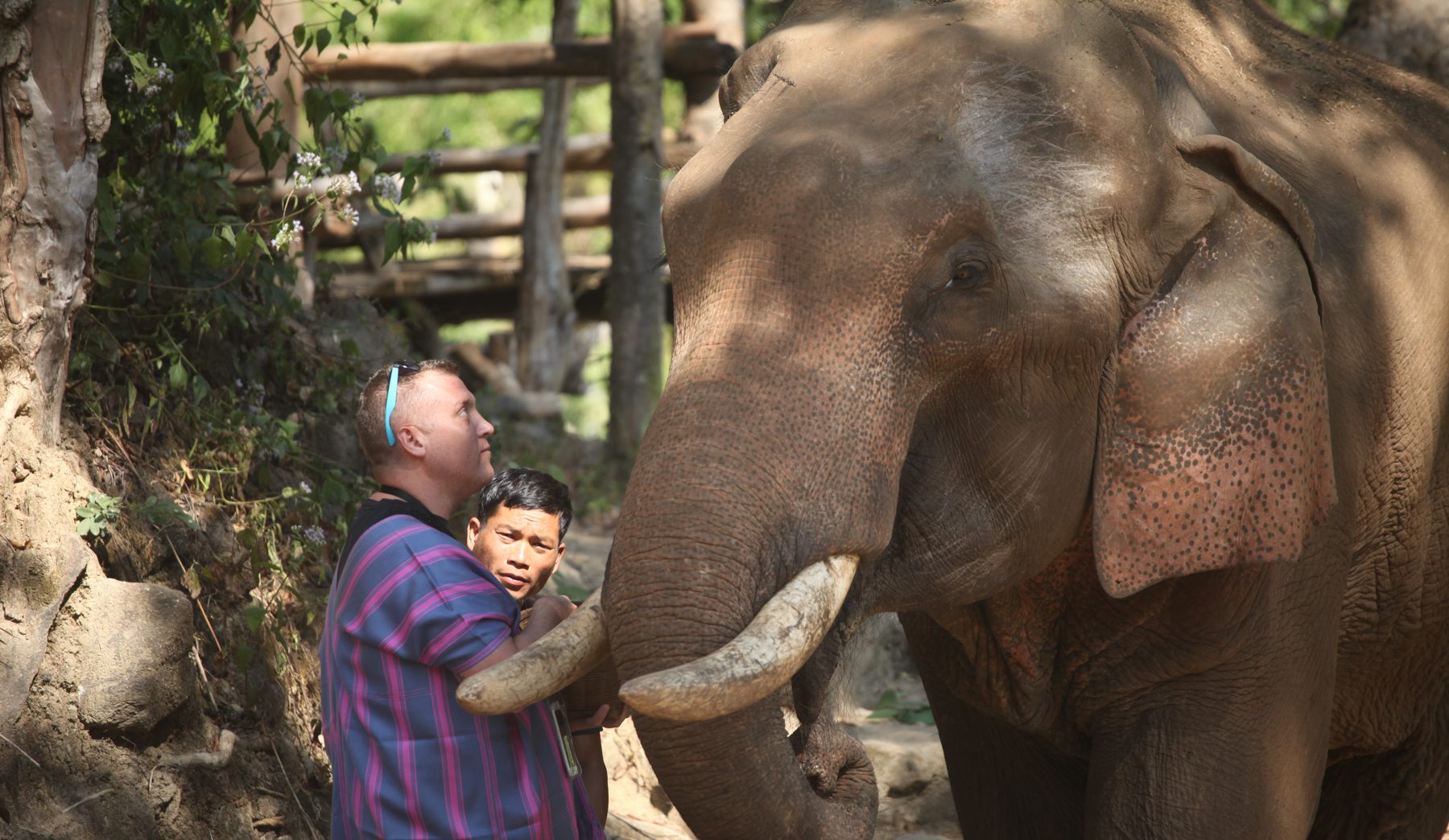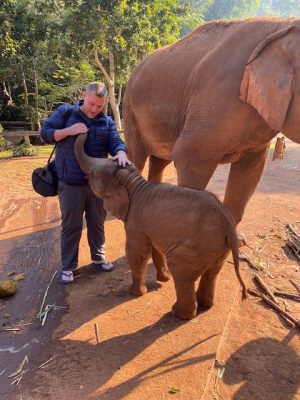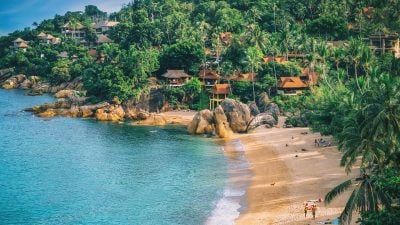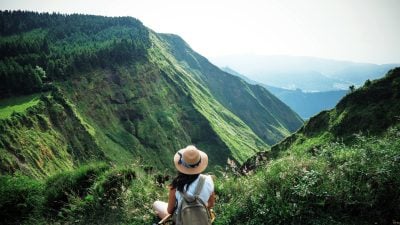
Is Riding an Elephant in Thailand Good or Bad?
In recent years there’s been an increasing amount of media coverage surrounding elephant tourism. While everyone has an opinion on the issue, there’s also an overwhelming desire to not only see these beautiful creatures, but interact with something so magnificent. The moment you look into the eyes of an elephant, you realize our world is more diverse than you knew was possible and that even a glimpse into the soul of an animal possibly older than you is what makes travelling our world the most fulfilling thing you can do.
There’s no better place to experience this than in Thailand, a country with a diverse landscape of hills, cosmopolitan cities, and beautiful beaches. However, it’s the people who will captivate your heart, whether it’s the hill tribe Karen people in the mountains, street food vendors in Bangkok, or the mahout, traditional elephant caretakers in Chiang Mai.
A quintessential experience in Thailand’s Golden Triangle is seeing elephants. However, there’s been much debate on the type of experience a traveler should have with these gentle giants, so it’s important to understand the facts and know the options before you visit the country.
On a recent visit to Thailand to inspect various camps, I had the opportunity to interact with not only the elephants, but also the staff to learn even more than before. As this was my sixth trip to Thailand, having spent likely four months in total in the country, I was excited to return to solely focus on finding responsible camps. While I had previously been to various elephant camps in Thailand, India, and Nepal, it was on this trip that I had a new perspective as I’m finishing a Master of Sustainable Tourism program and have since worked for an African government who also has misperceptions on animal tourism practices.

There’s a lot of stigma on elephant experiences and I’ve learned first-hand how reality is different than perception after posting a picture to my Instagram of sitting on an elephant in Nepal. The backlash was intense. However, the reality is that there is so much misinformation surrounding this issue, so I was determined to find out more about it from not only the experts, but also staff working in the industry.
While walking around Phuket and Chiang Mai, I noticed a common theme on advertisements of “No Riding,” which is likely the most controversial topic in elephant tourism. Is it OK to ride an elephant? Does it hurt the animal? If we can ride horses and have an entire sport comprised of riding bulls, how is this any different?
I quickly learned that there is no right or wrong answer as riding an elephant is not synonymous with proper elephant care. The weight of an Asian elephant ranges from 6,000 to 12,000lbs and a study from a non-profit, Elephantstay, stated that an elephant can carry up to 25% of its body weight, which would be 1,500lbs at a minimum. While I’ve been trying to work off my winter weight from 2014, I’m nowhere near that, so it couldn’t be that. I calculated that I’m only 3.3% of an average the elephant’s weight (OK, maybe 3.4% after these holidays!), so it would be the equivalent of me carrying something that’s 6lbs. I did learn, however, that proper technique is to actually ride bare-back, as in on the nape of the neck with your legs tucked behind the elephant’s ear. Sometimes places will have platforms and while that can be OK with enough padding underneath, that can actually add another 200lbs, so bare-back is ideal and more comfortable for the elephant.
The other varying issue is the flooring or ground, in that doing so on an even paved surface is not the best. However, in an open environment such as a forest, this is completely fine. I also learned that some elephants enjoy being ridden, which I suppose isn’t much different than wanting someone to step on my back as the pressure feels good. As with each of us, we have different preferences. While I’ve always wanted to wear a watch, I simply do not enjoy anything tight around my wrists. With elephants, some prefer that you walk on their left side, while others the right side. Each elephant is different, so it’s the establishments that have the understanding of such personal preferences that create a beneficial environment for them.

The other component surrounding this type of experience is training. Yes, it’s true, many of the elephants at the camps are retired log workers or have been saved from circuses and some have endured horrible training practices. However, in recent years, there have been new positive reinforcement techniques. A frequent image shown by animal rights groups is a bull-hook or ankus. However, in recent years training consists of simply resting this on the ear, which has been supplemented with other positive techniques in accordance with Pavlov’s strategy of consistent reinforcement. Some places even use sound therapy as a form of calming the animal, which is not any different than the relaxation I feel at the end of a yoga practice with the teacher circling the bowl. However, it’s important to note that these practices are different at every place, so it’s important to work with a travel professional who knows which camps practice responsibly.
It should also be noted that some camps that advertise “observation-only” and “no riding, touching, feeding or bathing” may not necessarily create a suitable environment for the elephants. One place I visited, which is supported by a global organization, was adamant about their stance. However, in conversations with staff, I learned that outside of the operating hours of the camp, the elephants were tethered for the remaining part of the day and night and had 80% of their food brought in due to a lack of space. The biggest challenge with elephants in Thailand is the simple fact that there is not enough wild area to support any new elephants, as an average elephant consumes 330-650lbs of food per day, which can cost upwards of US $18,000 per year. From the sheer financial perspective, it’s important to support responsible camps that are feeding the elephants who would otherwise not be able to survive. Some camps have also created rehabilitation and healthcare facilities to help even the wild elephants.
There are some camps that only offer the opportunity to feed elephants, however, the diet of an elephant is extremely important. If the default is sugarcane, bananas, and pineapple, there are repercussions of such a high-sugar diet. This factors into the welfare of the elephant, so while a place may exclude riding, but offer feeding, it needs to offer the right type of food.
One lasting image that can be disturbing is the use of chains to restrict movement. While the perception is one thing, the reality is that it is sometimes necessary to restrict access, not any different than putting a baby in a crib. Throughout the country, in order to provide clean water to people, that may require powerlines. As most animals are curious, if an elephant is without its mahout, there is potential for the elephant to wander off and hurt itself, even more so if it’s an adolescent, which can act like large dogs who believe they’re still a baby and want to wrestle and play, not knowing their own weight or size. For the first few years, and for their safety, they need to be tethered to their mother so they don’t get into trouble. While at first I believed a rope would be better than a chain, I learned that the rope can cause abrasions, while a chain doesn’t, so it’s the better option. They can also damage areas like farmland that used to feed communities, so it’s an important factor when seeing how elephant tourism fits into tourism and the environment.

In my studies on sustainable tourism, outside of the environmental pillar, there is the socio-cultural pillar to ensure the retention of customs and traditions, which include the Thai people’s view of an elephant representing the divine as well as luck and happiness. Traditionally, a young man born around the same time as a baby elephant is paired together with that animal. The man will become a mahout, elephant owner, responsible for taking care of the animal, creating a life-long bond between the two. This practice has evolved over time, but still today there is a mahout responsible for each elephant to ensure its care and to check it daily from its head to its toes. (Did you know that an elephant only sweats at the top of its toenails?)
From an economic perspective, tourism is extremely important to many countries and is no different in Thailand. By supporting places (even ones that may include elephant experiences), you’re supporting local communities and putting food on the tables of families who may have a challenging time without such a job.
The ultimate decision is up to you as a traveler on whether or not you want to experience or support this type of tourism. However, regardless of your stance, it’s important that judgement isn’t made across an entire industry when there are establishments that are really making a positive difference in the lives of both the local communities and elephants. It’s OK to say you’re not comfortable with something, but the best action you can take is to work with travel professionals who have the relationships and knowledge on selecting responsible places that can offer you an once-in-a-lifetime opportunity. I can promise that from the moment you first look into the eyes of an elephant, you will have a completely new perspective on what life has to offer.
Get more travel inspiration by email.
Subscribe
0 Comments

Get the latest travel trends & hear about the best deals on vacations around the world.
If you’re a Globetrotter, these are the newsletters for you!



